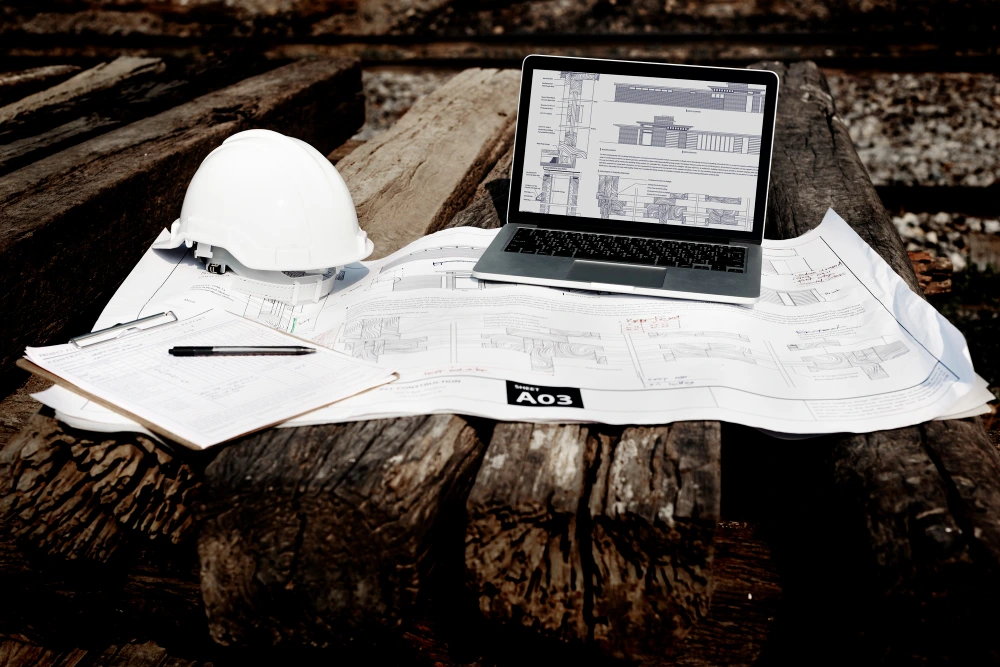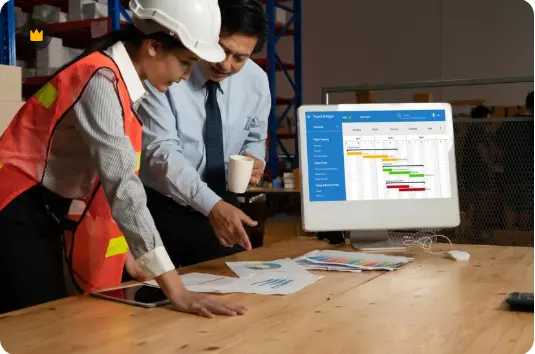Modern Estimation Methods & Techniques
In the competitive world of construction, choosing the right estimating method can mean the difference between winning a bid and watching profit slip away. As a seasoned construction estimator, I’ve seen firsthand how modern estimating techniques & methods in construction—like bottom-up, parametric, and plinth-area estimating—bring clarity, precision, and speed to cost forecasts. In this guide, we’ll dive deep into bottom-up estimating’s step-by-step process, explore when and how to leverage parametric and plinth-area methods, and show you how three-point and square-foot techniques can round out your toolkit. By the end, you’ll understand not just how each approach works, but exactly when to deploy it for maximum accuracy and project success.
Consult Us for Accurate Construction Estimating
At UtopianTakeoffs, we tailor our construction estimating and quantity takeoff services to fit the unique needs of your project—whether you need high-detail bottom-up analysis, fast parametric projections, or early-stage plinth-area estimates.Hire us today for reliable, project-ready estimates that help you win more bids and avoid costly overruns. Our experts combine modern techniques with industry-standard software and reliable cost data to deliver accurate, efficient, and risk-aware forecasts. From concept to contract, we help you bid smarter and build with confidence.
Table of Contents
Bottom-up Estimating in Construction Projects: A Detailed Approach
Bottom-up estimating is a powerful and precise technique used in construction project management to determine project costs, duration, and resource requirements by analyzing each component at the most granular level. It starts at the work package or even activity level within the Work Breakdown Structure (WBS), ensuring no detail is overlooked. Recognized by the Project Management Institute (PMI) and defined in PMBOK, this method is also known as deterministic or definitive estimating because of its high accuracy range of -5% to +10%. By aggregating estimates from the bottom up, construction managers can calculate reliable total project costs and timelines—making this approach ideal for large, complex projects where precision is key.
Key Benefits and Features of Bottom-up Estimating in Construction
- Highly Accurate: Offers an accuracy range between -5% and +10%, making it ideal for final cost estimates in the construction industry.
- Granular Detail: Breaks down projects into work packages and activities within the WBS for precise analysis.
- Resource Estimation: Helps determine exact resource units, materials, and labor needs per task.
- Time Calculation: Estimates duration of each activity based on allocated resources and time per unit.
- Cost Calculation: Computes cost by multiplying resource quantity by time and price per unit.
- Clear Visibility: Provides project managers with a full view of every component and interdependency.
- Best for Complex Projects: Suitable for projects that demand rigorous budgeting and scheduling accuracy.
- Aligned with PMI & PMP Standards: Follows guidelines set by the Project Management Institute and aligns with PMP certification knowledge.
Limitations of Bottom-up Estimating in Construction
While bottom-up estimating is known for its precision, it also comes with several drawbacks that project managers should be aware of before implementation:
- Time-Consuming Process: Because it involves estimating at the activity or work package level, it requires significant time and effort to complete.
- High Resource Demand: Needs input from various team members, such as estimators, project managers, engineers, and subcontractors, which can strain resources in the early phases.
- Complexity for Large Projects: For massive construction projects with hundreds of tasks, the granular analysis can become overwhelming and difficult to manage.
- Risk of Over-Detailing: Excessive breakdown may lead to micromanagement, losing sight of the bigger project scope.
- Dependency on Accurate Data: Final estimates like Utopian Takeoffs rely on historical data, current unit prices, and correct resource allocation—any inaccuracy can impact the entire estimate.This is also where the choice between free vs paid construction estimating tools can make or break accuracy.
- Costly in Early Phases: For preliminary cost estimation, this method may be overkill and too expensive or inefficient.
Why Hire UtopianTakeoffs for Your Next Project
As seasoned construction estimators, we understand that no two projects are the same—each comes with unique requirements, timelines, and constraints. That’s why our Construction Estimator and Quantity Takeoff Services are tailored using the most effective techniques from our toolkit of Modern Estimation Methods & Techniques in Construction. Whether you’re working with detailed blueprints or conceptual plans, we select the right approach—be it bottom-up for high-detail accuracy, parametric for scalable projections, or plinth-area for quick preliminary budgets.
Our team leverages cutting-edge software, historical cost data, and industry benchmarks to provide detailed quantity takeoffs and cost breakdowns, helping clients optimize bids, minimize waste, and manage budgets with confidence. From residential builds to large-scale infrastructure, we choose methods based on the project stage, complexity, and data availability—ensuring every estimate is both realistic and actionable. Our estimations aren’t just numbers—they’re decision-making tools built for clarity, accuracy, and project success.
What Is Parametric Estimating? A Simple Guide by a Parametric Estimator
Parametric estimating is a powerful cost and time estimation method used in project management to predict budgets and timelines with high accuracy. As a parametric estimator, I rely on historical data, statistical models, and measurable project parameters to estimate the cost or duration of a new project.
Unlike rough guesswork, parametric estimating is data-driven and follows a quantitative approach. For example, if it cost $1 million to build a 10,000 sq. ft. office in the past, and the new project is 20,000 sq. ft., we scale the cost based on that known relationship—assuming all other conditions are similar.
Why Use Parametric Estimating?
Here’s why parametric estimating is one of the most trusted and accurate estimation techniques used in industries like construction, IT, and consulting:
Key Advantages:
- High Accuracy: When based on solid data, this method can deliver precise cost and duration estimates.
- Scalable: Works for both small and mega projects by adjusting the input parameters.
- Efficient: Reduces time spent on detailed activity-level estimates.
- Repeatable: Ideal for projects with repeatable components or tasks.
- Data-Based: Uses regression analysis, algorithms, or even simple formulas like the rule of three.
How Does It Work?
To apply parametric estimating:
- Identify a measurable unit (e.g., cost per square foot, time per unit).
- Gather historical data from past projects or market sources.
- Confirm correlation between the unit and total cost/duration.
- Scale the value to match your current project scope.
- Validate the estimate using expert judgment or benchmarking.
When Should You Use Parametric Estimating?
- You have access to reliable historical data.
- The project parameters are quantifiable and repeatable.
- There is a statistical correlation between cost/duration and measurable units.
- You’re estimating a high-stakes project where accuracy is essential.
Real-World Example:
In highway construction, if past data shows it takes $2 million to build 1 mile of road, and your project is 5 miles long, the estimate becomes $10 million—adjusted for inflation, terrain, and local factors.
What Is Plinth Area Estimating?
Plinth Area Estimating is one of the simplest and most widely used methods to estimate the construction cost of a building. As a construction cost estimator, I use this method to quickly calculate the approximate building cost by multiplying the plinth area of the structure with the plinth area rate.
What Is Plinth Area?
The plinth area refers to the covered built-up area of a building, measured at the floor level of any storey or the basement. It includes:
- The internal and external walls
- Rooms, kitchens, bathrooms, staircase areas
- Enclosed balconies and porches (not cantilevered)
- Lift wells, shafts (under 2 m²), mumty, and staircase covers
It does not include:
- Open courtyards or terraces
- Cantilevered balconies or porches
- External architectural features like cornices or sunshades
- Platforms and open staircases
The plinth area is generally 10–20% higher than the carpet area, making it a reliable base for rough cost estimation.

What Is Plinth Area Estimating?
The Plinth Area Estimating Method involves the formula:
Construction Cost = Plinth Area × Plinth Area Rate
This method gives a preliminary cost estimate that helps clients and builders understand how much the project may cost. It is quick, practical, and effective—especially in the early planning stage.
What Affects the Plinth Area Rate?
The plinth area rate varies based on several factors, such as:
- Building material quality
- Foundation type and depth
- Number of storeys
- Roof structure and design
- Finishes, flooring, and fixtures
- Local construction rates and labour costs
Estimators usually refer to rates from similar completed buildings in the same locality to determine an accurate plinth rate.
How Is Plinth Area Measured?
To calculate the plinth area, we:
- Measure the outer dimensions of the building to the nearest 0.01 m (or 1 inch in imperial units)
- Include built-up parts like basements, garages, mezzanine floors, and stair covers
- Follow standards like IS 3861-2002 for accurate plinth area calculation
Why Use Plinth Area Estimating?
- Fast and economical way to estimate cost
- Ideal for budget planning in early project phases
- Requires less detailed design information
- Widely accepted in public and private construction sectors
Three-Point Estimating: A Smarter Way to Forecast Construction Costs
In construction, no two projects are exactly the same. Delays, weather, labor issues, material shortages — there are countless variables that can affect the cost and timeline of a project. That’s why relying on a single number to estimate cost or duration often leads to frustration, overruns, and rework.
This is where Three-Point Estimating becomes your best ally.
What is Three-Point Estimating?
Three-Point Estimating is a project management and cost estimation method that helps account for uncertainty. Instead of betting everything on one number, it considers three possible outcomes:
- Optimistic (O) – The best-case scenario if everything goes smoothly
- Most Likely (M) – The realistic outcome based on experience and typical project conditions
- Pessimistic (P) – The worst-case scenario if things go wrong
This method doesn’t just help you calculate better estimates — it helps you plan more confidently.
Our team to apply three-point estimating for risk-aware project planning
The Formulas You Need
You don’t need to be a math genius. Here are the two simple formulas used in Three-Point Estimating:
1. Triangular Distribution
Useful when all three outcomes are equally likely.
Formula:
(O + M + P) / 3
2. PERT (Program Evaluation Review Technique)
Better for when the most likely outcome should carry more weight.
Formula:
(O + 4M + P) / 6
Example:
Let’s say you’re estimating the cost to pour concrete for a commercial foundation:
- Optimistic: $8,000
- Most Likely: $10,000
- Pessimistic: $14,000
Using the PERT formula, you get:
(8000 + 4×10000 + 14000) / 6 = $10,333
That’s a more balanced, realistic estimate — not too risky, not too naive.
Why Use It in Construction Estimating?
As an estimator, I’ve seen firsthand how Three-Point Estimating helps avoid surprises. Here’s why it’s a valuable tool:
- Accounts for Risk: You’re not guessing — you’re forecasting with logic and data.
- Boosts Accuracy: You get a more balanced estimate instead of a shot in the dark.
- Improves Stakeholder Trust: Explaining the range makes your estimates more transparent.
- Supports Better Decision-Making: Helps owners, contractors, and teams plan for delays or cost spikes.
When Should You Use It?
Three-Point Estimating is best used when:
- You’re bidding on complex projects with many unknowns.
- There’s limited historical data on similar work.
- You’re dealing with critical path tasks or major cost components.
- Stakeholders need a clear risk picture before committing budget.
Best Practices for Estimators
Want to make the most of this method? Here’s what works:
- Talk to the field experts — their insight makes the estimates richer.
- Use historical data as a base whenever possible.
- Document assumptions — always explain what your numbers are based on.
- Revisit your estimates as the project evolves — conditions change!
Common Mistakes to Avoid
- Ignoring risk ranges and just using the “most likely” number
- Not involving the people doing the actual work
- Failing to update estimates as new information comes in
- Using it for every task — it’s best for key, variable items
Real-World Construction Example
Let’s say you’re estimating the time it’ll take to install HVAC in a commercial building:
- Optimistic: 5 days
- Most Likely: 7 days
- Pessimistic: 12 days
Using PERT:
(5 + 4×7 + 12) / 6 = 7.5 days
That’s a practical planning window — helping you schedule better and avoid penalties.
Top Estimating Techniques and When to Use Them
In construction, accurate cost estimating is the foundation of successful project planning, execution, and profitability. Choosing the right estimating technique can reduce risk, enhance financial control, and keep your project on track. But not every project calls for the same approach. From conceptual planning to final budgeting, knowing which method to use at each stage is key.

Here’s a breakdown of the top construction estimating techniques—Unit Cost, Assemblies, and Square Foot Estimating—including their features, benefits, limitations, and ideal use cases.
Unit Cost Estimating
Precision When You Need Granular Control
Unit Cost Estimating breaks down the project into individual components—like per square foot of drywall or per cubic yard of concrete—assigning a specific cost to each unit of measure. It’s the most detailed and accurate method used in construction cost estimation.
Key Features
- High Accuracy: Itemized estimates reduce the risk of cost overruns.
- Detailed Budgeting: Offers clear visibility into every construction element.
- Flexible to Changes: Easy to modify unit quantities if project scope changes.
Best Used For
- Final budgeting phases
- Complex commercial or residential builds
- Projects with well-defined scopes and specifications
Assemblies Estimating
Efficiency Through Grouped Costing
Assemblies Estimating organizes costs into logical groups—called assemblies—such as roofing systems, HVAC units, or plumbing networks. Each group includes all related materials, labor, and overhead, providing a streamlined estimating process with moderate detail.
Key Features:
- Faster Estimating: Bundled systems reduce line-by-line input.
- Balanced Accuracy: Offers a practical middle ground between detail and speed.
- System-Based Logic: Mirrors how construction systems are actually built.
Best Used For
- Design development phase
- Mid-sized residential or commercial projects
- Projects with partial but not complete design information
Square Foot Estimating
Speed and Simplicity in Early Planning
Square Foot Estimating is the go-to method during conceptual stages. It calculates a total cost based on a price per square foot, drawing from industry benchmarks and historical data. While it’s not the most precise, it’s perfect for feasibility assessments.
Key Features
- Quick Turnaround: Delivers fast, high-level estimates.
- Budget-Friendly: Minimizes early-stage estimating costs.
- Based on Averages: Uses historical cost per square foot by building type.
Best Used For
- Initial feasibility studies
- Early-stage client budgeting
- Comparative project analysis
Comparing Estimating Methods
A breakdown of the types of construction estimation including Unit Cost, Assemblies (see our full guide on Unit vs Assembly Estimating), and Square Foot Estimating
| Criteria | Unit Cost | Assemblies | Square Foot |
| Detail Level | High (per item) | Moderate (by systems) | Low (by area) |
| Time to Complete | Long | Medium | Short |
| Use Stage | Final planning | Design development | Conceptual phase |
| Accuracy | Very High | Good | Basic |
Choosing the Right Technique: What to Consider
When deciding which construction estimating technique to use, evaluate these factors:
- Project Phase: Early stages benefit from square foot; final stages need unit cost.
- Project Complexity: Detailed builds demand more precision (unit cost); simpler projects can use assemblies.
- Available Data: Limited plans? Go with assemblies or square foot. Complete plans? Unit cost wins.
Summary: Modern Estimation Methods & Techniques in Construction
In this article we explores the modern estimation methods & techniques in construction, focusing on how approaches like bottom-up, parametric, plinth-area, three-point, unit cost, assemblies, and square-foot estimating can be strategically applied based on project complexity, phase, and data availability. It highlights the strengths and limitations of each method and provides expert insights into when and why each technique should be used. The article also introduces construction estimator and quantity takeoff services, emphasizing how tailored estimation strategies help deliver accurate, efficient, and risk-aware cost forecasts across all types of construction projects.
FAQs
1. What is the most accurate construction estimating method?
Bottom-up estimating is the most accurate method, with a typical accuracy range of -5% to +10%. It analyzes every activity in detail, making it ideal for complex projects with well-defined scopes.
2. When should I use parametric estimating in construction?
Use parametric estimating when you have access to reliable historical data and quantifiable project parameters. It’s ideal for repeatable components and fast, scalable cost projections.
3. How is plinth area estimation calculated?
Plinth area estimation multiplies the plinth area of a building by the local plinth area rate. It provides a quick, approximate cost estimate in the early planning stage.
4. What’s the difference between three-point and single-point estimating?
Three-point estimating considers optimistic, most likely, and pessimistic outcomes, offering a more balanced and risk-aware estimate. Single-point estimating uses only one value, which may miss uncertainties.
5. Can I use square foot estimating for final budgeting?
No, square foot estimating is best for preliminary or conceptual phases. Final budgeting requires detailed methods like unit cost or bottom-up estimating for greater accuracy.

